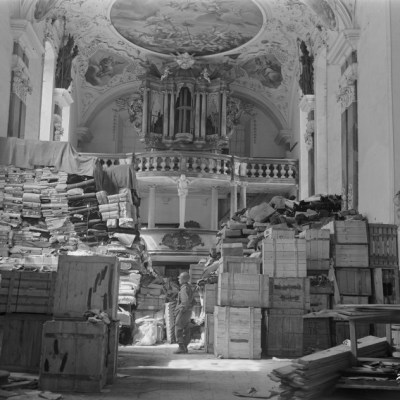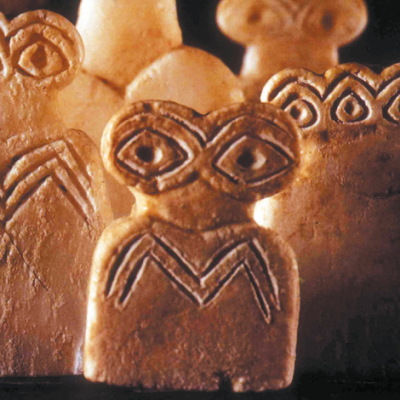On 21 December 2016, art dealer Nancy Wiener was arrested in New York on charges of possessing stolen property and conspiring to traffic in illicit antiquities. Her gallery, which specialised in south and southeast Asian antiquities, had been raided by federal agents during Asia Week last March, at which time several sculptures were seized. The seizures and her arrest can be seen as part of a broader effort to crack down on the illicit trade in Asian antiquities. In 2011, for example, Indian authorities arrested the Manhattan-based dealer Subhash Kapoor on charges of theft and smuggling, while over the last few years, museums and auction houses have voluntarily repatriated a number of sculptures that had been trafficked from Cambodia. The art world has long recognised that Mediterranean antiquities are at high risk of theft and looting, and participants in the trade are now on notice that archaeological materials from around the globe are to be bought and sold with extreme caution.
When a well-known dealer is arrested, what can a museum do in response – both to be diligent and to keep the institution’s best interests in mind? The guidelines of the Association of Art Museum Directors (AAMD) and the American Alliance of Museums (AAM) urge transparency, with AAM specifically recommending that member museums ‘make available the known ownership history of archaeological material and ancient art in their collections.’ To be well-positioned to respond to inquiries from law enforcement or the press, a museum should identify any objects in its collection that were acquired from Wiener and make their provenance information publicly available.
Regardless of how a museum shares information about provenance, the most important goal is to be as forthcoming and accurate as possible. To that end, documenting an object’s provenance may involve not just tracing its history of ownership (what do we know?), but also recording the sources of that information (how do we know it?), and noting the differences between verified and unverified data. Information about provenance can come from verbal statements, circumstantial evidence, or attestations provided by a seller or donor that have not been (and often cannot be) corroborated. Museum records should reflect these uncertainties and any vague or hypothetical statements.
Despite every best effort, many museums have made acquisition mistakes in the past and unwittingly accessioned works of art that were stolen from storerooms or plundered from archaeological sites. No museum should deaccession an object without having a justifiable reason for doing so. If, however, an investigation turns up looted antiquities in a museum collection (for example, if photographs show an object shortly after it was illicitly removed from the ground, or if its provenance documentation was demonstrably forged), then a museum has an obligation to redress the break in the chain of that object’s ownership in some way. Usually such a resolution is achieved through a financial settlement with, or physical return to, the country of modern discovery. Museums hold their collections as public trusts, and no museum should wish knowingly to retain stolen property on behalf of the public.
Uncovering a stolen object offers a museum the valuable if bittersweet opportunity to examine its past collection practices. Pinpointing exactly how that object slipped through the cracks can help ensure other stolen objects will not slide by in the future. While there is no failsafe way to avoid mistakes completely, there are concrete steps that can be taken to increase diligence before an acquisition is made. In particular, museums should draw a distinction between objects that are securely documented and those that are ‘said to be’ from a particular collection. Many of the objects Wiener sold, now under investigation, supposedly came from private European owners but had no real paper trail. Some of the sculptures that both she and Kapoor handled, which are alleged to have been stolen, were accompanied by signed declarations that they were outside their countries of origin before 1970. These attestations are now believed to be false. Verbal and written statements do not carry the same weight as documentation in an exhibition catalogue, sale record, or archival material.
To be sure, not every work of art legitimately on the market has an extensive paper trail; however, every work of art that was recently looted will certainly lack documentation. Diligent buyers should be attuned to those gaps, particularly for high-value objects, and do their best to verify anecdotal information through independent research. Even if there is no specific record of a work of art, its ownership history may be supported by circumstantial evidence, such as the collecting habits of previous owners, the provenance of comparable objects, or the recollections of trusted experts in the field.
Are the days of buying antiquities over? They do not need to be. As long as museums set a high ethical standard for collecting and establish responsible research practices that discourage the circulation of recently-looted objects, there is no reason not to continue to acquire antiquities. The arrest of Nancy Wiener serves as a serious reminder of the pitfalls of acquiring poorly-documented works of art, and the benefits to the art world of buying only those objects with an extensive and verifiable collecting history. Rather than being subject to investigation and seizure, well-researched objects are sure to remain in museum collections for the enjoyment of future generations of visitors.
Victoria Reed is the Sadler Curator for Provenance at the Museum of Fine Arts, Boston.


